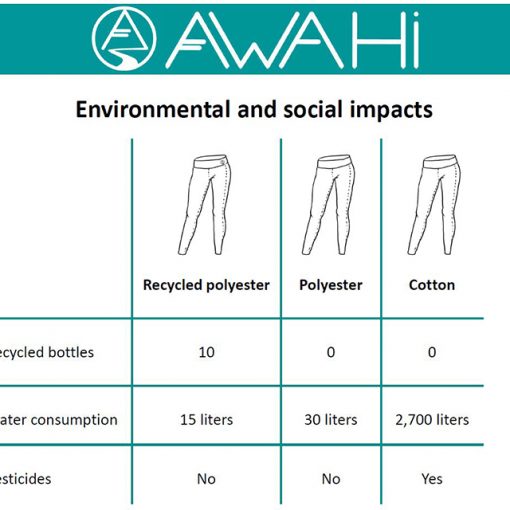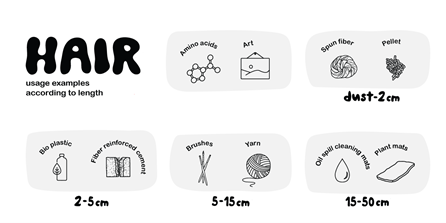The circular economy is increasingly a source of economic growth and job creation. Shifting towards circular business models can stimulate innovation and create new markets for recycled materials and sustainable products and services to match the increasing consumer demand. (e.g., Bocken et al. 2015; World Economic Forum 2022; Sparviero 2019.) Advances in technology, such as data analytics and AI, enable more efficient tracking, sorting, and recycling of materials. Digital solutions can also make it easier for companies to manage their workflow, cut costs, and provide customers with better and more accessible user experiences.
As the use of ICT increases, so do its adverse impacts if not designed appropriately with their ecological footprint in mind, according to Lotta Toivonen (2023), a specialist in biodiversity and everyday life at The Finnish Innovation Fund Sitra. Toivonen spoke at “Kilpailuetuna digitaalisuus – kestävää myyntiä verkossa!” seminar at the LAB University of Applied Sciences in Lahti, viewing the connections between e-commerce and sustainability. The DIH 2.0 projects organized the event in cooperation with the CEI BOOST and Canemure projects and Lahti region development Oy LADEC on November 23rd.

ICT contributes to carbon footprint
According to Toivonen, digital development is one of the last engineering branches where the environmental impact assessment is not a mainstream policy. The operation of data centres, which are integral to the functioning of ICT services, requires significant energy consumption. The demand for data storage, processing power, and high-speed internet connectivity contributes to the environmental footprint of data centres.
The growing use of ICT leads to an increased demand for electricity, both in terms of powering devices and supporting the necessary infrastructure. Digital services, such as streaming videos, contribute to data transmission and storage, which in turn has a carbon footprint. The energy used by servers, network infrastructure, and data storage facilities can be significant, Toivonen adds, calling for well-optimized code that requires less processing power, resulting in lower energy consumption on both the server and client sides.
Slim web design lowers its environmental impact
A concrete venue where companies can influence their environmental impact, as well as user experience, is how companies design their websites. Website design can significantly impact the energy consumption of a website, influencing both the environmental sustainability and the user experience. Websites that require a lot of data transfer leads to extensive need for electricity in data centers and on user’s devices, which then have an impact on their environmental impact (Salonen 2021). According to Toivonen (2023), heavier websites take longer to load, consuming more data and energy, especially on mobile devices. Optimizing images, using efficient coding practices, and minimizing unnecessary elements such as online videos can reduce the page weight and improve loading times, leading to lower energy consumption, says Toivonen, underlining that in the end, turning into energy efficient solutions leads to lowered costs for the companies, as well as smoother user experiences for their clients.
Author
Ari Hautaniemi works at the LAB University of Applied Sciences as a specialist on the CEI BOOST project (link to the CEI BOOST project website), funded by Interreg Europe. The project supports developing and implementing sustainable digital solutions in the circular economy.
References
Bocken, N., Rana, P. & Short, S.W. 2015. Value mapping for sustainable business thinking. Journal of Industrial and Production Engineering. 32:1, pp. 67-81. Cited 27 Nov 2023. Available at https://doi.org/10.1080/21681015.2014.1000399
Elchinator. 2019. lähde-koodi-ohjelmisto-tietokone-4280758. Cited 23 Nov 2023. Available at https://pixabay.com/fi/photos/l%C3%A4hde-koodi-ohjelmisto-tietokone-4280758/
Salonen, L. 2021. Ekologisesti kestäviä mobiilisovellusten suunnitteluperiaatteita etsimässä. Hyvien suunnittelukäytäntöjen listasta kohti heuristista mallia. YAMK-opinnäytetyö. LAB-ammattikorkeakoulu, kulttuuriala. Lahti. Cited 13 Dec 2023. Available at https://urn.fi/URN:NBN:fi:amk-2021092918141
Sparviero, S. 2019. The Case for a Socially Oriented Business Model Canvas: The Social Enterprise Model Canvas. Journal of Social Entrepreneurship 10:2, pages 232-251. Cited 27 Nov 2023. Available at https://doi.org/10.1080/19420676.2018.1541011
Toivonen, L. 2023. Suuntana ekologisesti kestävä digitalisaatio. Presentation at the Kilpailuetuna digitaalisuus – kestävää myyntiä verkossa! Webinar, LAB University of Applied Sciences, Lahti, 23 November 2023.
World Economic Forum. 2022. Driving Ambitions: The Business Case for Circular Economy in the Car Industry. Reports. Cited 27 Nov 2023. Available at https://www.weforum.org/publications/driving-ambitions-the-business-case-for-circular-economy-in-the-car-industry/
Links
Link 1. Snell, J. 2023. CEI BOOST. The Regional Council of Päijät-Häme. Cited 27 Nov 2023. Available at https://paijat-hame.fi/en/cei-boost-2/




